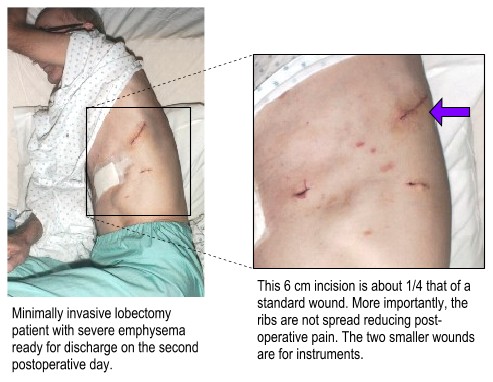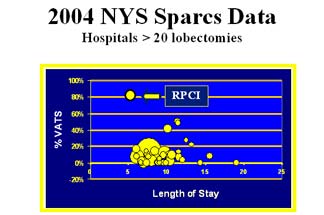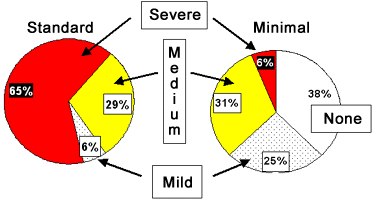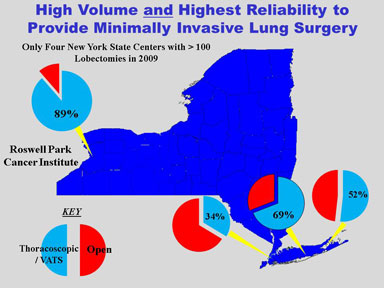Minimally Invasive (Thoracoscopic) Lobectomy
Minimally invasive lobectomy is a technique growing in popularity to remove certain lung tumors. It has the advantage of limiting the amount of chest wall trauma caused by a standard chest incision thereby reducing the recovery time. It has been shown to be a safe procedure, with similary cancer control outcomes as the traditional open operations. It also facilitates recovery for patients in general, but particularly for those who are somewhat frail from age or other co-morbid conditions. Patients tend to be discharged without requiring home health or nursing services.
Our surgeons use these techniques preferentially (over 80% compared with a national average of 20%) and we feel that is why we have one of the shorter average hospital stays in the state.
The shorter time in postoperative hospital stay and recovery time until normal activities is probably from reduced pain, see chart below.
There was much less severe pain in the group that received the minimally invasive operation.




